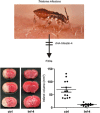Next-generation antithrombotics in ischemic stroke: preclinical perspective on 'bleeding-free antithrombosis'
- PMID: 22805877
- PMCID: PMC3463876
- DOI: 10.1038/jcbfm.2012.108
Next-generation antithrombotics in ischemic stroke: preclinical perspective on 'bleeding-free antithrombosis'
Abstract
The present antithrombotic drugs used to treat or prevent ischemic stroke have significant limitations: either they show only moderate efficacy (platelet inhibitors), or they significantly increase the risk for hemorrhages (thrombolytics, anticoagulants). Although most strokes are caused by thrombotic or embolic vessel occlusions, the pathophysiological role of platelets and coagulation is largely unclear. The introduction of novel transgenic mouse models and specific coagulation inhibitors facilitated a detailed analysis of molecular pathways mediating thrombus formation in models of acute ischemic stroke. Prevention of early platelet adhesion to the damaged vessel wall by blocking platelet surface receptors glycoprotein Ib alpha (GPIbα) or glycoprotein VI (GPVI) protects from stroke without provoking bleeding complications. In addition, downstream signaling of GPIbα and GPVI has a key role in platelet calcium homeostasis and activation. Finally, the intrinsic coagulation cascade, activated by coagulation factor XII (FXII), has only recently been identified as another important mediator of thrombosis in cerebrovascular disease, thereby disproving established concepts. This review summarizes the latest insights into the pathophysiology of thrombus formation in the ischemic brain. Potential clinical merits of novel platelet inhibitors and anticoagulants as powerful and safe tools to combat ischemic stroke are discussed.
Figures



References
-
- Adams HP, Jr, Effron MB, Torner J, Dávalos A, Frayne J, Teal P, Leclerc J, Oemar B, Padgett L, Barnathan ES, Hacke W, AbESTT-II Investigators Emergency administration of abciximab for treatment of patients with acute ischemic stroke: results of an international phase III trial: Abciximab in Emergency Treatment of Stroke Trial (AbESTT-II) Stroke. 2008;39:87–99. - PubMed
-
- Al-Tamimi M, Gardiner EE, Thom JY, Shen Y, Cooper MN, Hankey GJ, Berndt MC, Baker RI, Andrews RK. Soluble glycoprotein VI is raised in the plasma of patients with acute ischemic stroke. Stroke. 2011;42:498–500. - PubMed
-
- Armstrong PC, Peter K. GPIIb/IIIa inhibitors: from bench to bedside and back to bench again. Thromb Haemost. 2012;107:808–814. - PubMed
-
- Baker RI, Eikelboom J, Lofthouse E, Staples N, Afshar-Kharghan V, López JA, Shen Y, Berndt MC, Hankey G. Platelet glycoprotein Ibalpha Kozak polymorphism is associated with an increased risk of ischemic stroke. Blood. 2001;98:36–40. - PubMed
-
- Barone FC, Knudsen DJ, Nelson AH, Feuerstein GZ, Willette RN. Mouse strain differences in susceptibility to cerebral ischemia are related to cerebral vascular anatomy. J Cereb Blood Flow Metab. 1993;13:683–692. - PubMed
Publication types
MeSH terms
Substances
LinkOut - more resources
Full Text Sources
Medical

